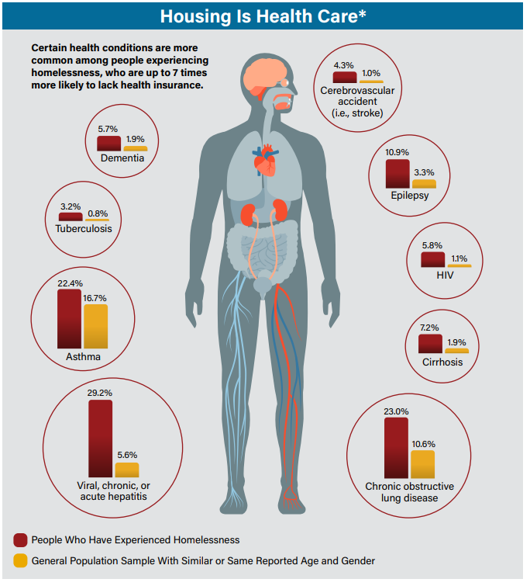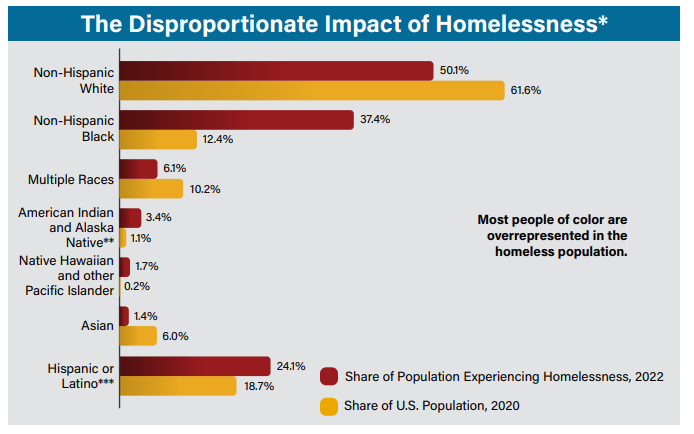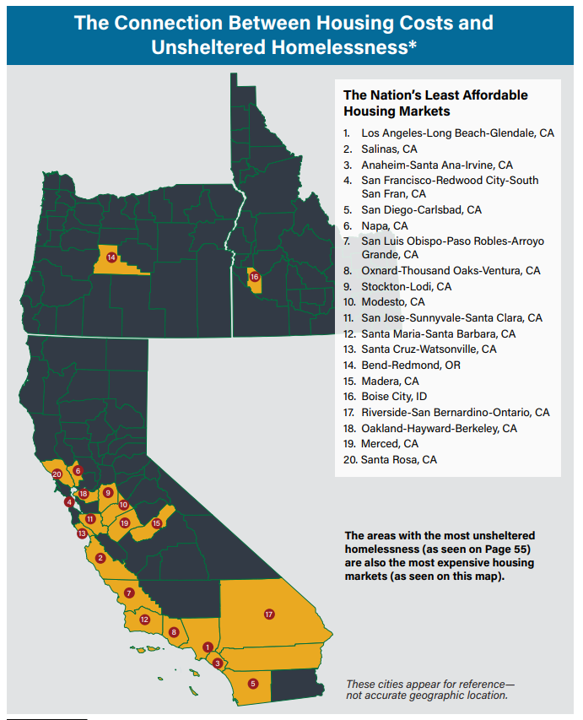“Housing is Healthcare”

That is a quote from a recent report by the United States Interagency Council on Homelessness (USICH) titled: “ALL IN: The Federal Strategic Plan to Prevent and End Homelessness.”
It is clear that homelessness causes poor health. Life expectancy for the average American is 77 years, but people who have experienced homelessness it is only 50 years old. Many chronic conditions are much more common among the homeless (see figure below).
Moreover, homelessness exacerbates racial disparities as homelessness is much more common among Latinos and especially African-Americans.

One of the main causes of homeless is that “The rent is too damn high.” It should not be surprising that some of the most expensive housing markets have the largest population of homelessness. In fact, the largest homeless population in the US is where I live, Los Angeles.

What is the solution? USICH has a number of solutions. They do start by declaring that:
…housing should be treated as a human right, and that housing is health care
This is a helpful sound bite but what does it mean? How much housing is a human right? Clearly, living in a mansion is not a human right. So a key question is what level of housing would be guaranteed.
Also, some of the policies advocated by USICH may have both positive and negative impacts on housing. For instance, the report discusses tenant rights and the potential to use eviction moratoria as was done during COVID. At first glance, this seems like a positive development for reducing homelessness. In the short-run, tenant protections would reduce homelessness since it would be harder for landlords to evict tenants. On the other hand, these provisions would likely raise rents. For instance, let’s say a tenant does not pay rent or destroys property. In these cases, it would be more difficult for landlords to evict them. Thus, it is likely that landlords will raise rents in response to these tenant provisions to maintain their return on investment. If rents rise, long-run homelessness could increase as well. Thus, tenant protections could have the counterintuitive effect of increasing homelessness. My guess would be that homelessness decreases as tenant protections increases at first, but then beyond some point the cost to landlords from excessive tenant protections would lead to higher rents and more homelessness.
While the solutions to homelessness are challenging to implement, all of us can agree that homelessness is a major problem and solving it will significantly improve the health of Americans today.







